 Water is our national treasure – our toenga. It’s the reason free trade agreements with China and India might be win win. These vast nations, like the Middle East and the southern Great Plains of the US – are fast depleting their water tables, and they need a reliable source of grain and other edible produce. NZ could be Oceania’s food basket.
Water is our national treasure – our toenga. It’s the reason free trade agreements with China and India might be win win. These vast nations, like the Middle East and the southern Great Plains of the US – are fast depleting their water tables, and they need a reliable source of grain and other edible produce. NZ could be Oceania’s food basket.
Some nations are seeking to buy up significant parcels of productive land here, perhaps to take advantage of our well-honed production methods and enviable lifestyle, but also our water allocations – this raises a concern…can we protect our ground water (surface water can be easier to monitor) from overuse and depletion, given the high stakes to secure farmland? – but that’s for another post.
Water gives us a competitive advantage in all sorts of ways, not only in food production. Tourism is a serious export earner – our stunning lakes, rivers, streams and beaches attract tourists, even though we’re not cheap or fast to get to – not to dismiss the fact that our People are also a mighty good reason to come here.

Thanks to ibiblio.org for this image
So what happens when NZ starts filling the void left by the declining water tables in neighbouring nations? How can we ensure our water tables don’t suffer the same fate? Look to our close neighbours for lessons in what not to do. Melbourne and Adelaide were in an unfortunate ‘race to the bottom’ (see Walker and Salt 2006) with both now taking the path to desalination. It is worth noting that Melbourne’s decision to fund their $4.5 billion desalination scheme is partly due to the risk from bushfires, as well as reduced catchment yields due to prolonged droughts, while their efforts in WSD (water sensitive design) are now world-leading (thanks to Stu from Designflow for reminding me of this). Interestingly, the dams are now filling again and desalination may be somewhat redundant – until the next drought.
Desalinated water is a very expensive way to irrigate (not to mention the emissions). Despite long experience and strong expertise in desalination, as their groundwater tables reach critical lows, Saudi Arabia has concluded desalination is not the answer to irrigation. So, after 2o years of ‘self-sufficiency’ in wheat (growing all they need), they will phase out all wheat production by 2012.
In 1991, an ‘elegant’ piece of legislation was enacted to promote sustainable management of New Zealand’s natural and physical resources. The RMA (or Resource Management Act) is pretty simple, and pretty clever, as regards to looking after our environmental, social and economic concerns, if only people had understood it better and sooner, and if only it hadn’t taken nearly 20 years to draft a National Water Policy Statement.  This guiding document is welcome, but unless it becomes more prescriptive on review (limits are left entirely to interpretation, while broad terms like sustainable and integrated are not accompanied by definition), and unless my cynical self is wrong in thinking that this government’s 2009 RMA amendment seems to give more weight to economic gain before the environment, then I’m not sure the RMA as it is being implemented will do what we actually need to protect water quality for the kids and the grandkids, and so on. But, hope springs…the Water Forum (which I contributed to in 2010) has recommended a collaborative process to make better decisions and is working with government towards making a Fresh Start for Fresh Water – that’s good.
This guiding document is welcome, but unless it becomes more prescriptive on review (limits are left entirely to interpretation, while broad terms like sustainable and integrated are not accompanied by definition), and unless my cynical self is wrong in thinking that this government’s 2009 RMA amendment seems to give more weight to economic gain before the environment, then I’m not sure the RMA as it is being implemented will do what we actually need to protect water quality for the kids and the grandkids, and so on. But, hope springs…the Water Forum (which I contributed to in 2010) has recommended a collaborative process to make better decisions and is working with government towards making a Fresh Start for Fresh Water – that’s good.
Also good is the fact that in 2006, New Zealand joined Sweden, Finland, the Czech Republic and Britain as world-leaders in a study of 133 countries and their Environmental Performance Index. Six categories were evaluated: sustainable energy, environmental health, water resources, air quality, biodiversity and habitat, and productive natural resources. I imagine we’d still be up there today. Let’s do what we can to keep leading the world in environmental performance. If we look after the environment, it will look after us, and we’ll sustain our competitive advantage. We’ll also have the privilege of helping to ‘feed the world’.
So, rather than giving my opinion on the RMA and our water future, which is really dependent on the government’s next few moves, I’ll share a paper on the background to this legislation that might get you thinking. It was written for a course I’m taking…and there are a couple of links worth checking out too.
This is a little bit of history, nicely put:
http://envirohistorynz.wordpress.com/2010/03/20/resource-management-law-in-nz-a-potted-history/
and here is a link to heaps of NZ water stories, updated daily it appears:
http://garrylawswaternews.blogspot.com/
If you’d like the references for the paper, please drop me a line. If you are referencing this article, here’s the format:
Moore, R. M. (2011). Environmental Law in New Zealand. In web article Avoiding the race to the bottom: the RMA – what does it mean to water in New Zealand? Retrieved from https://robynmmoore.wordpress.com/
Environmental Law in New Zealand by Robyn Moore
 Today, few New Zealanders would question the importance of preserving and protecting our natural and physical heritage. Arguably, New Zealand’s soil, its relatively unpolluted air and its comparatively abundant water resources lie at the heart of this country’s livability (UNEP, 2010:5-6; Robb and Bright, 2004:42.1) and underpin its current and future prosperity (Land and Water Forum, 2010).
Today, few New Zealanders would question the importance of preserving and protecting our natural and physical heritage. Arguably, New Zealand’s soil, its relatively unpolluted air and its comparatively abundant water resources lie at the heart of this country’s livability (UNEP, 2010:5-6; Robb and Bright, 2004:42.1) and underpin its current and future prosperity (Land and Water Forum, 2010).
The Resource Management Act (RMA) (1991) was derived to protect New Zealand society’s interest in its environmental resources, directing users of a particular resource to remedy, mitigate or avoid any related adverse effects (RMA, 1991, Part 2, section 17).
 The RMA was groundbreaking legislation in 1991, providing a simplified mechanism for managing the quality of land, air and water – under a single law (MfE, 2006). A feature of the Act is its statutory recognition of Maori values and interests, incorporating the concept of stewardship (or kaitiakitanga) and taking account of the principles of the Treaty of Waitangi.
The RMA was groundbreaking legislation in 1991, providing a simplified mechanism for managing the quality of land, air and water – under a single law (MfE, 2006). A feature of the Act is its statutory recognition of Maori values and interests, incorporating the concept of stewardship (or kaitiakitanga) and taking account of the principles of the Treaty of Waitangi.
It is evident from a search of the literature that the impacts of the RMA, in the twenty years since inception, are the subject of enduring debate and some review. Some commentators have argued that the effects based legislation is too flexible, while others counter that it is too rigid (see Hutchings, 1997 and OECD, 1996). Arguments aside, most people with some experience of the rather ad hoc collection of more than 70 statutes and laws prior to 1991 (MfE, 2006:2), would agree that the RMA arrived none too soon, as it sought to streamline an important process for sustainable resource management – by putting effects-based limits on the ways we use and manage environmental resources in New Zealand. The exclusion of mining activity (Part 2, section 5.2) is noteworthy and is discussed in a later section.
Historical Development

Matiu, image by R Moore
Everyone who exercises functions under the RMA, has to do so for the single purpose of promoting sustainable management of the natural and physical resources involved (Sheppard, 2010).
While there are examples of resource management dating back to Roman times, the contemporary concept of environmental sustainability can be traced back to the United Nations Conference on the Human Environment in Stockholm, 1972, when OECD nations engaged in discussions about ways to ensure a more certain future for the world’s natural and physical resources (Environmental Defence Society, 2011; Williams, 1997).
The RMA began its evolution in the late 1980’s under a Labour government, following (and perhaps in response to) the Muldoon era of Think Big (Young, 2001; Envirohistory NZ, 2010). New Zealand had introduced groundbreaking legislation in 1941 with the Water and Soil Conservation Act (MfE, 2006). By the 1980s, there was a plethora of environmental legislation in effect. Two key acts, the Water and Soil Conservation Act 1967, and the Town and Country Planning Act 1977 were subject to numerous amendments. By the time Labour entered office (under the David Lange administration) in 1984, there was broad recognition of a need to review New Zealand’s environmental acts and amendments.
Work on streamlining and reforming 78 pieces of legislation into one act began in earnest in 1988 following Labour’s (1987) return to office (Environmental Defence, 2011). The guiding principle at that time was to deliver more sustainable development, by balancing (or trading off) economic gain with environmental ‘cost’ (Young, 2001). The approach prompted the concept of polluter pays (Gumley, 2000), first endorsed by the OECD in 1972 (see OECD, 1975).
In 1981, a report by the Nature Conservation Council had proposed New Zealand adopt an integrated approach to sustainable development (Environmental Defence, 2011), and in 1987, a description of what an integrated approach might mean was released in the form of the Brundlandt Report (1987). This seminal report proposed merging the decision making around the environment and economics to achieve the goal of sustainable development (Gumley, 2000; World Commission for Environment and Development, 1987) and offered a guiding definition:
Sustainable development meets the needs of the present without compromising the ability of future generations to meet their own needs (World Commission for Environment and Development, 1987).
In 1990, a change in government had prompted a review of the approach to the new Act, resulting in a shift of emphasis. Under the incoming National government, the focus turned to managing the environmental risk arising from the use of a particular resource (MfE, 2006; Envirohistory NZ, 2010). Thus, promoting sustainable management (defined in RMA, Section 5, Part II) is the fundamental purpose of the RMA (MfE, 2006; Hawke, 2006; Envirohistory NZ, 2010).
As noted by Buhr & Bartlett (1993), much environmental policy is reactionary, developed when environmental problems reached crisis point. In 1993, Buhr and Bartlett defined four main themes for developing successful environmental policy. Broadly, they suggested that:
1. Prevention is better than remedy (anticipatory policy) and;
2. To secure a better environment, people must change their ways, and;
3. To better manage environmental problems institutional reform was required, with
4. An integrated approach to environmental policy development also required, to deal with interrelated problems and complexity.
Key themes
In line with Buhr and Bartlett’s (1993) commentary that an integrated approach is worth adopting, and working on the presumption that prevention is preferable to remedy, the RMA focuses on the environmental effects of activities, with the underlying assumption that any use, development or subdivision should proceed if there are no adverse environmental effects, or if those effects can be avoided, remedied or mitigated (MfE, 2006).
Essentially, the RMA is a rights structure that poses constraints and provides incentives for protecting the particular use of resources, creating an environmental conflict resolution framework (Hawke, 2006:1). Presumably the tragedy of the commons (whereby the value of a resource is eroded and finally depleted by unconstrained common use, as described in Hardin, 1968) can be avoided by the success of this structured decision making process, thereby sustaining the resource and its benefits for current and future generations.
There are three key themes to the Resource Management Act 1991:
1. Sustainable Management of Natural and Physical Resources
2. Integrated management of resources
3. Control of the adverse effects of activities on the environment.
As discussed, sustainable management (RMA, Section five) is about managing the risk of using a particular resource. The RMA integrates the management of air, water, soil and ecosystems into one streamlined piece of legislation (MfE, 2006). To this end, an overview of resource management issues, policies and methods is required, in the form of Regional Policy Statements prepared by each Regional Council.
The legislation requires ecological, social, economic and cultural adverse effects to be considered (RMA, 1991), with communities / individuals and organisations having a say in the resource consent process in the form of submissions. The submission process allows for thorough public consultation on activities that may have an effect on the environment.
The Environmental Defence Society (2011) has suggested that sustainable management is a narrower concept than sustainable development, with ensuing potential for some environmental planning to be reactive, rather than proactive.
Other Environmental Law/Legislation in New Zealand
 While the most significant law concerning the environment is the Resource Management Act 1991 (with issues adjudicated by the Environment Court of New Zealand), the passing of the Environment Act 1986 and the Conservation Act 1987 are also significant, given they set up the Ministry for the Environment and created the office of the Parliamentary Commissioner for the Environment (MfE, 2008), as well as the Department of Conservation. Other important (and complementary) legislation includes the Biosecurities Act 1993, and the Hazardous Substances and New Organisms Act 1996 (implemented principally by the Environmental Risk Management Authority or ERMA). These are all important in making substantive progress towards a more sustainable society (PCE, 1997; MfE, 2006).
While the most significant law concerning the environment is the Resource Management Act 1991 (with issues adjudicated by the Environment Court of New Zealand), the passing of the Environment Act 1986 and the Conservation Act 1987 are also significant, given they set up the Ministry for the Environment and created the office of the Parliamentary Commissioner for the Environment (MfE, 2008), as well as the Department of Conservation. Other important (and complementary) legislation includes the Biosecurities Act 1993, and the Hazardous Substances and New Organisms Act 1996 (implemented principally by the Environmental Risk Management Authority or ERMA). These are all important in making substantive progress towards a more sustainable society (PCE, 1997; MfE, 2006).
Thus, some resource management activities are outside the jurisdiction of the RMA, or overlap jurisdictions. Other overlapping jurisdictions include fish, shellfish and seaweed harvesting, managed under the Fisheries Act 1996, the logging of indigenous forests on private land (the Forests Act 1949), while marine pollution from ships and offshore structures is managed under the Maritime Transport Act 1994 (Environmental Defence Society, 2011).
It is notable that while the RMA deals with the environmental effects of mining and resource exploration, mining activity is dealt with by the Crown Minerals Act 1991, providing the instrument by which the Crown allocates rights to the exploitation of mineral resources such as gold, gas and coal (MfE, 20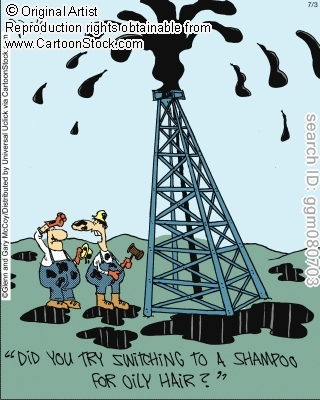 06). Recently, the National government sought feedback from the public on a discussion paper that proposed the release of more than 7,000 hectares of land from the protection of Schedule 4 of the Crown Minerals Act. The government received in excess of 37,000 submissions on the discussion paper and in July 2010 they announced their decision not to remove any land from Schedule 4 (MED, 2010). This level of interest in the future of New Zealand’s most protected environmental resources suggests strong public support for the guiding principles of sustainable development (as in Brundtlandt, 1987). Another government initiative, recently accepted into law, is the Resource Management (Simplifying and Streamlining) Amendment Act 2009. This Act makes significant changes to the Resource Management Act 1991, coming into force on 1 October 2009 (Environmental Defence Society, 2011). Time will tell whether the changes have the desired effect of improving outcomes for air, land and water, while at the same time enhancing socio-economic wellbeing and prosperity.
06). Recently, the National government sought feedback from the public on a discussion paper that proposed the release of more than 7,000 hectares of land from the protection of Schedule 4 of the Crown Minerals Act. The government received in excess of 37,000 submissions on the discussion paper and in July 2010 they announced their decision not to remove any land from Schedule 4 (MED, 2010). This level of interest in the future of New Zealand’s most protected environmental resources suggests strong public support for the guiding principles of sustainable development (as in Brundtlandt, 1987). Another government initiative, recently accepted into law, is the Resource Management (Simplifying and Streamlining) Amendment Act 2009. This Act makes significant changes to the Resource Management Act 1991, coming into force on 1 October 2009 (Environmental Defence Society, 2011). Time will tell whether the changes have the desired effect of improving outcomes for air, land and water, while at the same time enhancing socio-economic wellbeing and prosperity.
Conclusion
Some of the actions we take are not sustainable in the long term (MfE, 2006). In this context, this paper has sought to provide an overview of Environmental Law in New Zealand, its influences and its effects. In particular, there is a focus on the historical contexts of drafting and accepting the Resource Management Act 1991. The origins and influences of other environmental legislation have been discussed, such as the Environmental Act 1986 and the Conservation Act 1987. Moreover, the paper has considered the impact of international protocols, and reports like Brundlandt (1987), in shaping environmental law in New Zealand.
 For twenty years the Resource Management Act has shaped the way New Zealand preserves and protects its natural and physical assets. Arguably, New Zealanders accept it is an essential part of a sustainable future. Given the significant rise in the environmental demands of society’s consumers over the last two decades, and with the related upsurge in dairy production and expanded tourism markets and activities, it would be interesting to understand the implications for New Zealand, if the RMA had not come into force on 1 October 1991. New Zealand is undoubtedly a world leader in legislative approaches to environmental management. However, environmental degradation remains a growing concern, suggesting people enforcing the RMA and other relevant legislation like the Biosecurities Act, could more effectively invoke the necessary resource management processes implied by the legislation (as advocated by Sheppard, 2010). New Zealand’s environmental legislation exists to preserve and protect our environmental resources, making an invaluable contribution to ensuring our sustainable future.
For twenty years the Resource Management Act has shaped the way New Zealand preserves and protects its natural and physical assets. Arguably, New Zealanders accept it is an essential part of a sustainable future. Given the significant rise in the environmental demands of society’s consumers over the last two decades, and with the related upsurge in dairy production and expanded tourism markets and activities, it would be interesting to understand the implications for New Zealand, if the RMA had not come into force on 1 October 1991. New Zealand is undoubtedly a world leader in legislative approaches to environmental management. However, environmental degradation remains a growing concern, suggesting people enforcing the RMA and other relevant legislation like the Biosecurities Act, could more effectively invoke the necessary resource management processes implied by the legislation (as advocated by Sheppard, 2010). New Zealand’s environmental legislation exists to preserve and protect our environmental resources, making an invaluable contribution to ensuring our sustainable future.
Related post: https://robynmmoore.wordpress.com/2010/09/25/the-price-of-progress/
For legislative detail: http://www.rmalink.org.nz/view-subtopic.php?id=15
-41.037514
174.885444
 Good news – a big increase in cockle numbers has shown up in the latest survey by Guardians of the Pauatahanui Inlet (GOPI). This signals that the intent of Porirua’s Harbour and Catchment Strategy (2012) is being realised, with a rise in cockle count a pretty good indication that the health of our beautiful harbour and estuary is being restored.
Good news – a big increase in cockle numbers has shown up in the latest survey by Guardians of the Pauatahanui Inlet (GOPI). This signals that the intent of Porirua’s Harbour and Catchment Strategy (2012) is being realised, with a rise in cockle count a pretty good indication that the health of our beautiful harbour and estuary is being restored.










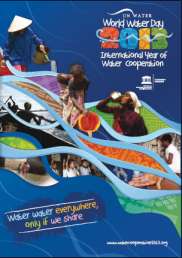








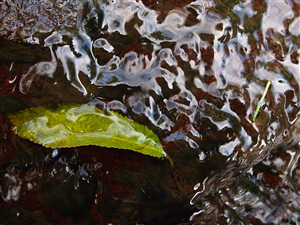



































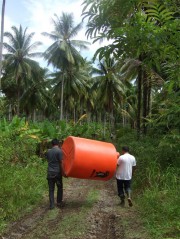






















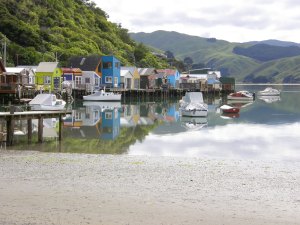
















You must be logged in to post a comment.